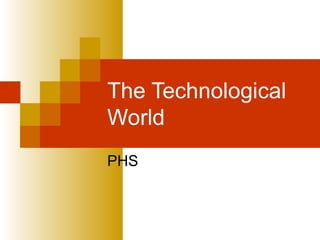The document discusses the design and manufacturing of technical objects. It covers the materials that objects can be made from like wood, ceramics, metals, plastics and composites. It examines the properties and degradation of these materials. It also looks at technical drawings, including projections, engineering drawings and exploded views, which are used to design objects before manufacturing. Finally, it considers some of the issues in manufacturing technical objects from the materials.

































































